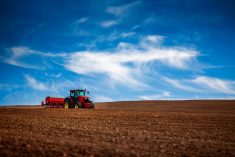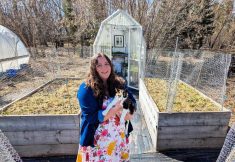IT WAS ON HIS FARMin the early 1980s that John Bennett first came to stare the reality of soil erosion in the face. It had been a wet season and rain throughout July had already saturated his soils. Then came one of those fierce summer storms that the Prairies are famous for, unleashing a torrent of water with nowhere to go but downhill — carrying more and more topsoil away with each gallon.
When the storm finally passed, Bennet jumped into his vehicle to survey his fields. What he found were deep cuts running down the hillsides in his fields, the sure marker of water erosion. For a farmer who’d always taken an interest in preserving his land, it was a dark day.
Read Also

Are you ready for farm succession?
What motivates some farmers to make a succession plan while others don’t seem worried.
“I was very discouraged by what I saw,” Bennett tells Country Guide. “There was a lot of topsoil moving downhill, and I just thought there’s got to be a better way. I just really thought that it was unconscionable to be responsible for that kind of damage.”
It was a visceral reaction made all the deeper by his reading and observations on the impact of soil degradation on societies past and present, perhaps summed up most eloquently by Franklin Delano Roosevelt who said in reference to the dust bowl of the 1930s, “A nation that destroys its soil destroys itself.”
A decade earlier, Bennett had taken a journey that gave him a front-row seat on a society that had failed its agricultural heartland. “When I was travelling through North Africa in the early 1970s on the cheap, you could see that at one time it was an extremely fertile place,” Bennett said. In fact, he points out, the region had been the Roman Empire’s breadbasket. “Carthage was known as a grand oasis.”
Today the once-fertile region that the Caesars called their granary is a desert. Long gone are the crops that even in Roman times measured in the hundreds of thousands of tons.
It’s a sight that Bennett never forgot, and that inspired him to become one of the foremost — and most unrelenting –— advocates of soil conservation in the country.
Edgar Hammermeister, a farmer and agronomist from Alameda, Sask. who is past president of the Saskatchewan Soil Conservation Association, says the North Africa story is vintage Bennett, and a great illustration of the perspective that Bennett has brought to the table during any discussions.
“It’s not your everyday farmer who can make those historical connections and bring that understanding to the discussion,” Hammermeister says. “He’s a very forward-thinking person.”
Bennett’s growing interest in soil conservation was a timely development as agricultural researchers and a small group of farmers in the region began the early work of developing the management practices that were eventually to become the recipe for zero tillage. Their shared interest brought more like-minded farmers and others in the industry together and encouraged further research and development, eventually changing the way the Prairies are farmed.
As a relatively new farmer at the time — Bennett was a teacher by training — he was able to bring a fresh perspective that wasn’t necessarily steeped in generations of tradition. It made trying something new on his farm just a bit easier, he now says.
And although the challenge of building the zero-till system was a tough one, he says farmers, agronomists and machinery makers all knew that it was going to be vital that they succeed.
“You just have to look around the world, with our huge and growing populations, to see why we’re going to have to pay attention globally to soil stewardship,” Bennett says. With over six billion hungry mouths on the planet already, and more arriving every day, agriculture must be productive if it is going to stave off disaster. And protecting it all starts with the soil.
This early interest in soil conservation and zero till led Bennett to become active in groups and associations. He was president of the Saskatchewan Soil Conservation Association, a board member of the Saskatchewan Research Council and is currently a board member of the Saskatchewan Pulse Growers, where he’s taken a leading role on the evironmental and sustainability policy files.
Among other things, he’s been very active in the design of a proposed carbon credit system for Saskatchewan that would place that province at the forefront of carbon sequestration and credits. Edgar Hammermeister says this activity is just the latest in a long line of projects Bennett has taken on where he’s represented the interests of farmers.
“John is a very altruistic person,” Hammermeister said. “He’s always very interested in what the issues are and how they affect farmers and their profitability.”
Another skill Bennett brings to the table is an ability to connect with people and get them to consider a proposal.
“John is very capable when it comes to the social processes which are required to move an idea forward,” said Hammermeister. “He’s able to understand where compromise is possible and where principle must be protected. He’ll co-operate until principle is broken. I hold him in very high regard for this.”
In the end Bennett says the journey has been a fascinating one to date, but that he’s benefited as much or more from it than anyone, not least because he has a far greater understanding of the ground he walks on and earns his living from.
“What’s changed for me is that I used to walk through my fields and just see dirt,” Bennett says. “Now I pick up a handful, and it’s soil. It’s an ecosystem in my hand that I’m just beginning to understand.”
———
“You just have to look around the world, with our huge and growing populations, to see why we’re going to have to pay attention globally to soil.” — John Bennett















